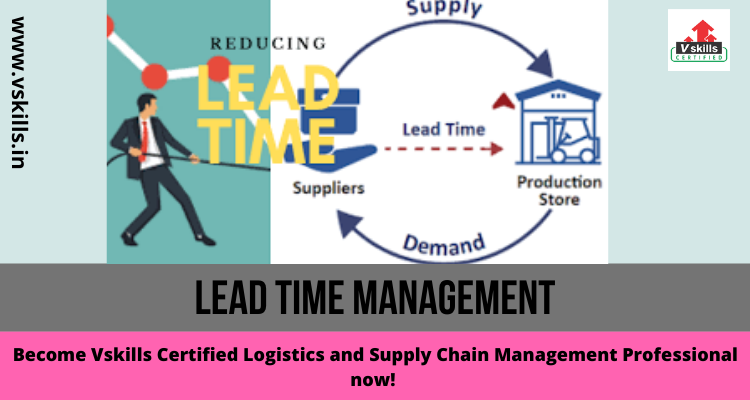Let’s learn about Lead Time Management. Lead Time is the amount of time between process initiation and completion. For our customers Lead Time is the time between a confirmed customer order and its scheduled pick up or delivery based on our terms and conditions. This varies based on the customer and the product.
There are several different types of Lead Time, but there are four primary types of Lead Time for our purposes in a manufacturing or assembly environment.
- Customer Lead Time – the amount of time taken between order confirmation and order fulfillment (either pick up or delivery depending on the agreement with the customer).
- Material Lead Time – the amount of time it takes to place an order with a supplier and receive it, from confirmed order to having it on hand.
- Factory/Production Lead Time – the amount of time it takes to build and ship a product if all the materials are available.
- Cumulative Lead Time – the total amount of time it would take from confirmed order to delivery of product if you had to order all the materials (if none were on hand). It is the summation of material lead time and factory lead time.
Lead Time Relevance
- Lead Time is an important factor for customer satisfaction. Typically customers want goods or service as fast as possible with minimal effort.
- For manufacturing and assembly the concept of Lead Time is married to and has a direct relationship with the amount of inventory that exists at different points in the overall supply chain.
- If Customer Lead Time is less than: Material Lead Times, Production Lead Times, or Cumulative Lead Times it will result in the holding of inventory within the supply chain at some or all points. Variation and inconsistency will often compound this issue – it will cause the holding of stock or inventory to mitigate risks in the supply chain.
Reducing Lead Time
- Hold stock, ideally the right stock.
- Vertical integration – the ability to source, manufacture and assemble internally. Suppliers can be vertically integrated or our business could become more vertically integrated.
- Reduce Cycle Times, thus reducing Production Lead Times. For example, a focus on setup reductions and Quick Changeover (QCO); Line Balance Activities etc.
- Have good equipment and employee availability. Solid Total Productive Maintenance (Preventative Maintenance, Autonomous Maintenance etc.). Robust quality systems in place. Proper staffing levels.
- Reduce supplier Lead Times. Focus on long lead time components – source local; supplier business improvements etc.
- Suppliers/vendors hold stock e.g., stocking agreements.
- Vendor Owned Inventory (VOI); Vendor Managed Inventory (VMI); Consignment Inventory etc.
- Change shipping methods – faster, more frequent shipments.
- Have accurate forecasting, planning and scheduling.
- Good supplier performance and quality. Stable strategic suppliers. A focus on supplier development can be beneficial to help with this.
- Reduce product and component variation and obsolete low runners.
Benefit of Reduced Lead Time
- Reduced Lead Times can mean reduced inventory and more cash on hand for the businesses. In several aspects it means less risk, exposure and management of materials.
- One main exception would be a reduction in Customer Lead Time. If Customer Lead Time reduces it can mean winning more business and at the same time holding higher stocking levels; especially if there is a variance between the Customer Lead Time and the Cumulative Lead Time (or the Production or Material Lead time specifically).
Inventory buffer is inventory used to protect the throughput of an operation or the schedule against the negative effects caused by statistical fluctuations.



